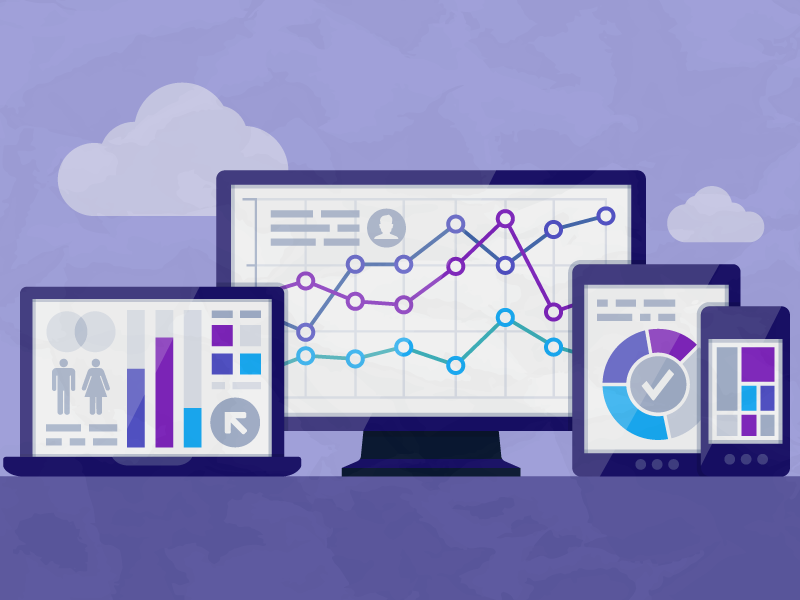The capacity to gather and use relevant insights has evolved into a critical prerequisite for success in today’s quickly changing corporate environment. Businesses using data efficiently can better see trends, comprehend client preferences, streamline operations, and make wise judgments.
Nevertheless, the path from data collecting to useful insights is challenging. It necessitates a methodical strategy that includes specifying precise goals, using suitable data-gathering strategies, guaranteeing the accuracy of the collected data, implementing efficient visualization tools, and keeping ethical standards.

Organizations must first clearly know their goals and the precise information they want to learn. This entails figuring out the important questions they are trying to answer and the pertinent measurements and indicators to measure. Organizations can choose the best data-gathering techniques, such as surveys, interviews, social media monitoring, or data analytics technologies if they have a well-defined goal.
Prioritizing data quality is crucial throughout the process, assuring data validity, dependability, and correctness through validation, cleansing, and integration approaches. Utilizing visualization tools and techniques is essential for turning complicated data into insights that can be readily understood and implemented after the data has been gathered and verified. Ethical factors, including data privacy, permission, and security, should support data gathering to preserve people’s rights and uphold stakeholder trust.
What is an Actionable Insight
Gathering and analyzing data to provide useful and applicable knowledge that can be utilized to advise important actions and decisions is known as “collecting actionable insights.” It entails converting unstructured data into insightful and useful knowledge that gives businesses a better understanding of their clients, markets, operations, or other areas of interest.
Relevance, clarity, and the capacity to direct certain actions or tactics that can result in desired results are characteristics of actionable insights. Organizations may find patterns, trends, and opportunities that help them make wise decisions, improve processes, improve customer experiences, and ultimately accomplish their goals by gathering actionable insights.
Why is it important?

Gathering actionable insights is paramount because it enables companies to make knowledgeable decisions and produce significant results. Businesses can better understand their consumers, markets, and operations by turning raw data into actionable information. This gives them the knowledge to spot trends, foresee changes, and take advantage of opportunities. Actionable insights allow firms to streamline operations, improve customer experiences, and remain ahead of the competition.
They also provide a strong platform for strategy formulation. Businesses may use these insights to inform data-driven choices that boost productivity, profitability, and overall organizational performance. The capacity to gather actionable insights is a vital component of creating a competitive edge and attaining sustainable success in a company environment that is continually shifting.
- Define Clear Objectives and Key Performance Indicators (KPIs)
Before beginning the data-gathering process, it is essential to identify clear objectives and develop pertinent Key Performance Indicators (KPIs). This stage ensures that data-collecting activities align with the business objectives and concentrate on obtaining information that directly contributes to the intended results. The foundation for gathering data is clearly stated objectives and KPIs, which aid in future analysis and decision-making.
- Recruit Domain Leads for Idea Generation
Leaders should include the heads of the corresponding areas in analyzing various customer KPIs. This will assist them in better interpreting the findings and deriving useful conclusions from the information. Domain leads are more knowledgeable about the initiatives that produce certain results, so brainstorming with them may help leaders develop appropriate strategies and action plans based on the outcomes acquired through candidate sourcing.
- Ensure That Each Team’s Metrics Align With More General Objectives
Leaders should be cautious of the “local optimization” pitfall while examining corporate KPIs. In this situation, teams or departments focus on improving their own KPIs at the expense of or in addition to the company’s overarching objectives. To avoid this, team leaders must constantly work to ensure that the metrics they assess from each team align with the overall corporate goals.
- Use Efficient Data Gathering Techniques
Choosing the appropriate data gathering techniques is crucial for obtaining insightful information. Some often employed techniques include surveys, interviews, focus groups, social media monitoring, and site analytics. Selecting techniques appropriate for the research’s goals, target audience, and data needs is critical. Thorough knowledge of the data and deeper insights may also be obtained by combining qualitative and quantitative methodologies.

- Assure Data Integrity and Quality
Acquiring trustworthy and useful insights requires high-quality data. Validate and purge the gathered data to eliminate outliers, mistakes, and inconsistencies. To assure accuracy, apply data validation techniques like cross-referencing and outlier identification. Effective data integration is essential since fragmented data might produce erroneous or incomplete insights. Organizations may have trust in the insights obtained and make wise decisions by assuring data quality and integrity.
- Utilize Data Visualization and Storytelling
Data visualization is essential in turning complex data into clear and simple insights. Use visualization tools and techniques to show data in aesthetically pleasing and interesting formats, such as charts, graphs, and infographics. Stakeholders easily understand insights because effective visualization improves comprehension and decision-making. Additionally, narrative approaches may make findings more effective and understandable to a wider range of people.
- Accept advanced analytics and machine learning
By utilizing machine learning and predictive modeling algorithms, advanced analytics approaches may be used to glean deeper insights from data. When using conventional analysis techniques, organizations can use these strategies to find patterns, correlations, and trends that may not be immediately evident. Organizations may discover untapped insights, foresee potential outcomes, and take proactive action based on data-driven forecasts by adopting advanced analytics.
- Think About Ethical Issues
In the era of data privacy and security, it is critical to prioritize ethical issues when gathering data. When gathering personal information, get the required authorizations and consent while abiding by all applicable laws and privacy principles. To secure sensitive data, put in place robust data protection procedures. To ensure trust and respect for privacy rights, organizations must uphold openness and openly communicate with people about data-gathering activities.
- Audit Your Metrics Often
When was the last time you examined your metrics to determine which ones were most important? Metrics audits have to be performed as frequently as software or subscription audits. Making judgments based on out-of-date metrics is one of the worst blunders. Understanding performance requires frequently appointing truly important measures.
- Identify Vanity Metrics And Remove Them
Vanity metrics may appear attractive at first glance, but they don’t truly supply information about your performance or practical insights. Incorporating them into your study might be deceptive because they significantly impact the final outcomes. To avoid them, remove them from the process before drawing any conclusions.
- Think About The Setting Of Company Metrics
Understanding the underlying causes of the data’s effects and interpreting the metrics within the overall business context are crucial. Providing a more realistic picture of the company’s performance and identifying opportunities for improvement can alter how outcomes are perceived.
Surveys and quizzes as a tip for Collecting Actionable Insights
Surveys are a useful tool for gathering information that can be put to use, giving businesses a direct line of communication with their target market. It is essential to develop clear, succinct survey questions that speak to certain study goals. Organizations may glean valuable and usable information from respondents by designing surveys well.

Consider using a mix of closed-ended and open-ended survey questions to enhance their usefulness. Organizations can compare and quantify replies using closed-ended questions with specified response possibilities. On the other hand, open-ended questions give qualitative insights and let respondents express their ideas and viewpoints in their own words, giving the data a richer context.
Website owners and content producers may simply construct and administer surveys on their WordPress websites using a survey or WordPress quiz plugin. It is one such add-on, with a user-friendly interface and many options to help speed up the quiz creation process. Users may use this plugin to create personalized quizzes and surveys, collect valuable data in more engaging and interactive way, and evaluate the findings, all from the comfort of their WordPress dashboard.
Finally,
Gathering actionable insights is crucial for firms wanting to succeed in a data-driven environment. Businesses can unlock the power of their data by following key tips such as defining clear objectives and KPIs, using effective data collection methodologies such as surveys, ensuring data quality and integrity, leveraging data visualization and storytelling techniques, embracing advanced analytics, and considering ethical considerations.
The capacity to turn raw data into actionable insight enables firms to make educated decisions, streamline operations, improve customer experiences, and ultimately achieve their objectives. Organizations may leverage the full potential of their data, establish a competitive advantage, and set the road for long-term development and success in today’s changing business market by applying these ideas.